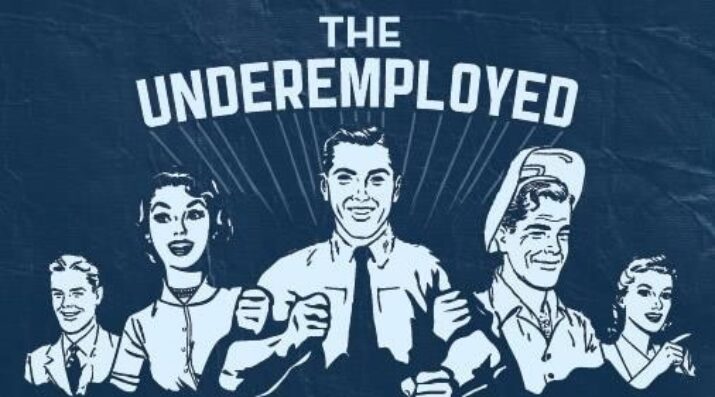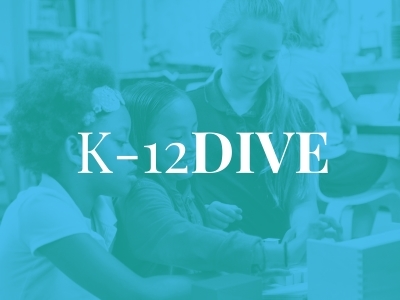Preparing for the Future of Work with Career Technical Education
Topics

Today’s learners face an uncertain present and a rapidly changing future that demand far different skills and knowledge than were needed in the 20th century. We also know so much more about enabling deep, powerful learning than we ever did before. Our collective future depends on how well young people prepare for the challenges and opportunities of 21st-century life.
We cannot look at education in terms of separate categories. All students need high level learning connected to their careers.
Most of us (educators, business leaders, researchers, students, and parents) have realized by now that our educational system has been and continues to be desperately behind in terms of success, especially as it connects to the future of work and our economy. If you don’t agree, stop reading and go watch one of those “Housewives of $%&^#*” shows.
With the continued demand and need for change, we have turned to many solutions—including, but not limited to new standards, assessments, technology, and programs. Historically, we had two high school tracks. There was vocational education—programs designed to train people for blue collar jobs. And then, in contrast, there were those that did a college prep program where the goals were college and a white collar job. Ironically, many of our college grads and non-grads now find themselves in grey collar jobs (underemployed and working in a career that did not require a college degree or their level of education). But I truly digress.
What I’m suggesting now is that we cannot look at education in terms of finite or separate categories. All students need high level learning while also seeing connections between their education and long-term career/life paths. That is why most educators, and others who are trying to lead the way, are continually looking at things that include different pedagogies (project-based learning, design thinking, tech integration) and newer programs (Career Technical Education, STEM, Makerspaces, Linked Learning).
Career Technical Education
I’d like to focus on one of these programs or approaches that has been getting a lot of attention and rightfully so. Vocational Education has re-emerged and is now called Career Technical Education (often referred to as CTE). CTE is now visible in almost all secondary programs through specific career pathways, academies, linked learning programs, electives classes and more. Whereas the former vocational education was hands-on, it was not necessarily steeped in the new CTE elements of career pathways, industry standards, professional advisory groups, internships, and other work-based learning. CTE is now standards-driven and working to respond to our new global economy, as well as a means of connecting students to their learning. CTE works to engage students, create meaningful ways to build skills and learn content, and have student think about their long-term career path and educational needs. Indeed, students in these CTE courses have higher high school graduation rates, college success rates, grade point averages, and career placement.
Discover a current high school student's perspective on CTE and college prep:
Realignment and Relevance: CTE Programs and Generation Z
CTE’s foundations and intentions are both good. It is grounded in connections to the real world and career. However, in my estimation, based on many visits to high schools and colleges around the country, there are some things that CTE needs to incorporate in terms of pedagogy and culture that are more aligned with the rest of the change in education.
Non-CTE programs could learn a great deal from the world of Career Technical Education. They could pay closer attention and adopt/adapt the following practices into programs affecting all students. Let’s first look at what CTE does well and then what CTE can improve upon.

What CTE Gets Right
- Student Choice. By now, we must realize the amazing human impact of choice. CTE programs and courses are typically ones that students opt into, not just land in like our core programs. They represent areas of interest and careers and therefore have built-in student buy-in and relevance. I have argued for a long time that our core programs need to design aspects of choice throughout. Choice could be represented in course selections or ways to meet requirements, which projects to pursue, which collaborators to engage, how to present your final work and more. Even within CTE programs, there is often choice to pursue various certifications, experiences, internships and more. The more options, the more likely the ultimate buy-in and engagement.
- The Power of the Cohort. Many CTE programs have students cohorted where they experience anything from multiple courses to teams of teachers and even projects together. The idea of a cohort is to gather strength and trajectory from the consistent and focused community that becomes more comfortable with each other, as well as more successful over time. They become tight knit machines who have positive and professional relationships with one another, their teachers/advisors, community partners, and mentors.
- Skills-Focused. In our core academic areas, or our dominant current paradigm, there has been a move to be more skills-focused. The new standards and assessments have made a concerted effort to realign with skills and performance. That being said, everything from our graduate profiles to core curriculum still leave much to be desired when it comes to identifying and mastering skills. Yet, the private sector and industry, which CTE looks to for direction, is more focused on skills than ever before. Those are both technical skills and soft skills. The reality is that CTE courses and programs do a better job for students in both areas. The technical skills are applied, practiced and even perfected at times in real world, industry-related situations. And because there are typically more collaborations (peer-to-peer, mentoring, work-based learning, industry partners), soft skills are valued, taught, assessed and practiced a great deal more.
- Partnerships. Due to the CTE expectation of having to partner with industry advisory boards, programs have built-in advisors, partners, and mentors. These industry partners can serve as not only advisors, but also contest judges, presentation audience members, hosts for work-based learning opportunities, and so much more. They can also contribute to and support curriculum development, equipment and resources, industry trends and developments, community engagement, administrative support, program advocacy, showcase/exhibition venues and much more. It is imperative that students have adult relationships, mentors if you will, outside of the school and home environment. These should be professionals from industry, business, government, or non-profit work that serve the students—their future employees and customers—as an educational support system.

What CTE Needs to Get More
- Instructional Pedagogy. This seems to be a common weakness in CTE classes and programs. Although there are great tools, resources, hands-on opportunities, industry partnerships and more, there is often not an understanding of more contemporary and 21st century–oriented instructional approaches and pedagogies. Many of our CTE instructors come from industry and have very little formal teaching experience or training. This is not automatically bad, but they need to realize much has changed and evolved instructionally since their days in school. For example, many CTE instructors still rely on direct instruction (lecturing) exclusively and disseminating new content or information to their students. They would benefit from more collaborative and student-led practices that are more engaging. Additionally, they would also benefit from learning approaches such as project-based learning. Although they have lots of hands-on activities and labs, they need to connect the hands-on to larger instructional and learning needs and challenges. Their industry associations and equipment are often new school, but far too often their teaching practices are old school.
- Tech Integration. There is some irony here as there is with the pedagogy. For example, most CTE programs are fairly adept at incorporating the latest tech from their industry. Many of them are using everything from 3D technology to drones to industry-specific software. But they often lack in the area of instructional technology. Many instructors are still lecturing and having students take notes versus having students collaborate digitally on tasks and challenges. Many are not using things such as Google Applications, web-based resources, and various video and presentation applications. While some of their core colleagues, albeit a minority, are doing things like having students blog or create their own websites/digital portfolios, too many CTE instructors are still having students keep paper notebooks, binders, worksheets, and textbooks. They need to get core teachers to use the industry tech, while they need to use a lot more of the instructional tech that the core teachers are using.
- Public Work. This is directly connected for the most part to the first two items. Many of our CTE programs have students producing high quality work. But far too often, no one knows about it. Our students are entering an economy where their personal branding, marketing, and presentation skills are going to be more vital than ever before. They are going to compete regularly for “gigs” also known as employment. It’s tragic to know some of the fine work that students have completed and even mastered, but yet are not featured on a website, blog, or digital portfolio. It’s a sin to not have demos and presentations of their work on YouTube and Vimeo. It’s limiting them if their work is not part of public spaces, meetings, showcases, and exhibitions.
- Future of Work & the Gig Economy. We often think that any change that is happening now has happened before. Yes, we have experienced technological advances before. Yes, we have had radical new economies emerge before. Yes, we have witnessed global changes previously. However, many experts agree that we have probably not seen this level of rapid change and disruption to our systems that we are seeing now, especially happening simultaneously. And yes, much of what we are predicting is not an exact science. However, all of us need to pay more attention to what is unraveling. Whether it is artificial intelligence, freelance employment trends, emerging economies, new or disappearing industries, climate, energy and so much more, our students are truly entering a new frontier. All of us, especially in education, need to study this, attempt to understand it, and ultimately prepare for it. It’s a moral, social, and ethical obligation. Anything that we are doing in schools that is not connected to this could be questioned. Typically, our parents, students, community members, policy makers, and others do not possess deep awareness of this at all. It’s our duty to enlighten one another and our stakeholders. Our students’ futures, as well as ours, truly depends on it.
Naturally, education as a whole can learn a great deal from the successes of so many of our CTE programs. However, CTE cannot operate in isolation either and needs to learn from the best of transformative education outside of their standard practices. Mutual benefits await.




